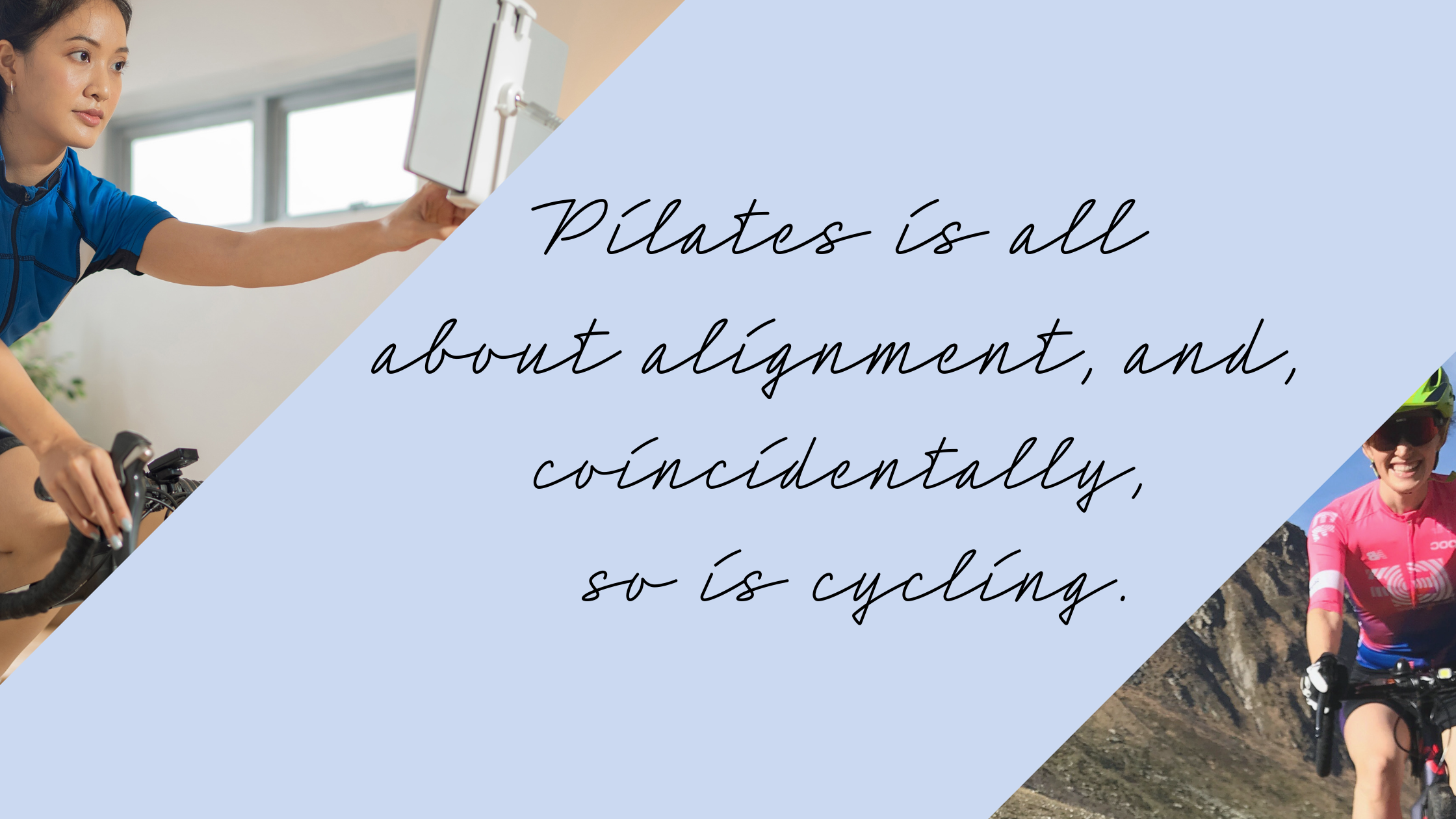3 Ways Pilates Can Align Cyclists for an Intuitive, Healthy Pedal Stroke
Indoor and outdoor cycling are some of the best cardio exercises out there. Cycling is low impact, so it won’t hurt your joints and provides opportunities to get your heart rate up through speed intervals, challenging hills, and endurance training.
For both indoor and outdoor cyclists, a healthy pedal stroke is critical to avoid injury and maximize your efficiency, allowing you to work hard all the way through your workout. Recreational and serious cyclists alike can benefit from Pilates as a cross-training workout that will align your body and make a healthy pedal stroke intuitive every time you get on your bike.
What is a Healthy Pedal Stroke?
Pedaling on a bike involves more than just moving your feet up and down. A healthy pedal stroke requires balance, alignment, and focus.
As you push your foot down, you engage your quads and glutes as you straighten your knee. Your hamstrings, calves, and hip flexors all engage in bending the knee and returning to the start in the upstroke. Your foot should be flat, driving through the ball of your foot through the entire stroke.
If you leg or ankle wobbles or makes a figure eight pattern, you are going to experience unnecessary strain, which can cause discomfort or injury. Additionally, if you are too dominant in the push or the pull of the pedal, you won’t achieve muscular balance in your hips and thighs. Tight hip flexors, overactive hamstrings and stiff feet can all be avoided with a smart pedal stroke.
How Pilates Can Improve Your Pedal Stroke
While Pilates doesn’t involve getting on a bike, adding it to your routine as cross-training can improve your pedal stroke in several ways.
1. Improve your hip, leg and foot alignment
Pilates is all about alignment, and, coincidentally, so is cycling. When you pedal, your leg should be positioned to align your hip, knee, and ankle. Pilates footwork gives you space to practice that alignment so you can get comfortable with how it feels. Muscle memory will kick in on the bike, ensuring that your legs, hips, ankles, and feet are all aligned when you go out for your next ride.
2. Open up your chest
Avid cyclists spend a lot of their time hunched over the frame of their bikes. This can lead to tightness in the shoulders and upper back, plus the hamstrings and hip flexors. Pilates can address mobility and tightness in your chest, as well as legs, which is critical for cyclists. This can aid with recovery and provide a greater range of motion, which will make you more efficient in your rides.
3. Work on eccentric contractions (to balance out concentric movements)
Bear with us for a quick science lesson. Concentric contractions happen when your muscles engage by shortening. In contrast, eccentric contractions occur when your muscles engage by lengthening. When you pedal on a bike, your muscles all work together using concentric contractions. If you only do concentric movements, your muscles will start to shorten over time, leading to a loss of mobility or injury. Pilates focuses on stretching to lengthen your muscles, thereby balancing your concentric movements with eccentric ones, helping you improve mobility and prevent injury.
See How Pilates Can Help You Perform Better on Your Bike
Pilates will make you rethink everything you think you know about mobility and movement. Adding Pilates to your cross-training regimen can improve your performance in other sports, including cycling.
Try Pilates to see how it impacts your pedal stroke. A healthy pedal stroke will become intuitive with practice, giving you an advantage every time you get in the saddle.
Schedule an appointment with me to get started!

